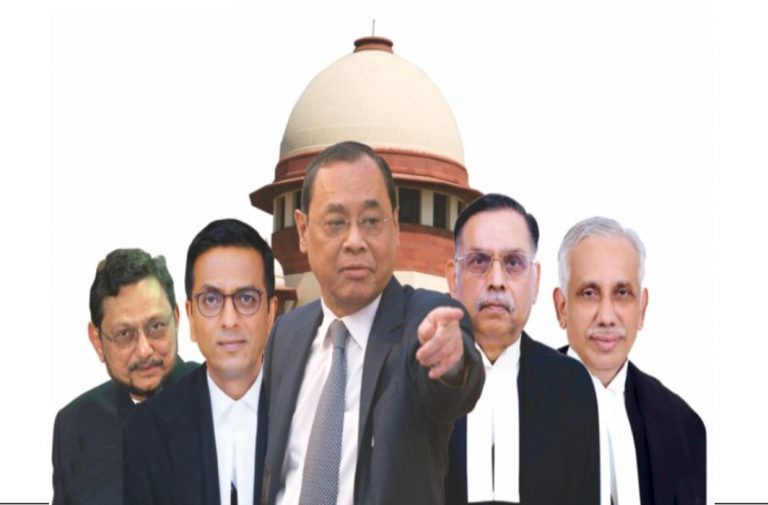
Today’s Ayodhya verdict, whose judgement ran into 1,045 pages, has laid out the grounds on which the disputed land was given to the trust for construction of a Ram Temple.
The court said: “a claim to possessory title has to be based on exclusive and unimpeded possession which has to be established by evidence… The claim to title will have to be judged from the perspective of long and continued possession.”
It pointed out that “No documentary evidence has been brought on the record indicating the conferment of title in a form of the grant of the land underlying the mosque.” The construction of a structure on a land does not prove title to the land.
Court made the following points:
- The documentary evidence indicates that the riots of 1856-7 led to the colonial government erecting a wall with railings to bifurcate the areas of worship.
- The setting up and offering worship at the Chabutra immediately outside the railing and in close proximity to it is an indicator that the Hindus asserted their right to worship at what they believed is the birth-place of Lord Ram.
- The layered excavation at the site of excavation has also revealed the existence of a circular shrine together with a makara pranala indicative of Hindu worship dating back to the eighth to tenth century.
- A finding of title cannot be based in law on the archaeological findings which have been arrived at by ASI.
- An adjudication of title has to be deduced on the basis of evidence sustainable in a court of law, which has withstood the searching scrutiny of cross-examination. Similarly, the contents of gazetteers can at best provide corroborative material to evidence which emerges from the record.
- The physical structure of an Islamic mosque did not shake the faith and belief of Hindus that Lord Ram was born at the disputed site.
- Testimonies of both Hindu and Muslim witnesses indicate that on religious occasions and festivals such as Ram Navami, Sawan Jhoola, Kartik Poornima, Parikrama Mela and Ram Vivah, large congregations of Hindu devotees visited the disputed premises for darshan. The oral testimony of the Hindu devotees establishes the pattern of worship and prayer at Sita Rasoi, Ramchabutra and towards the Garb Grih‘, while standing at the railing of the structure of the brick wall.
The upshot of this is, “The disputed site is one composite whole. The railing set up in
1856-7 did not either bring about a sub-division of the land or any determination of title.”
On the 2010 Allahabad High Court judgement, Court observed:
“The High Court has adopted a path which was not open to it in terms of the principles formulated above. It granted reliefs which were not the subject matter of the prayers in the suits.”
Supreme Court also said that High Court overlooked the fact that Nirmohi Akhara was barred by limitation. “Moreover, the claim by the Nirmohi Akhara was as a shebait who claimed a decree for management and charge. On its own case, Nirmohi Akhara could not have been granted an independent share of the land.”
— India Legal Bureau

